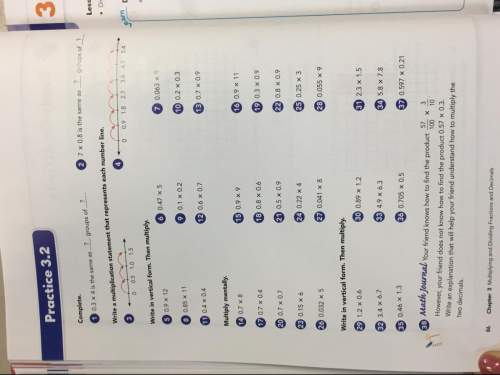
Mathematics, 22.06.2019 04:40 chl75
The discrete random variables x and y take integer values with joint probability distribution given by f (x, y) = a(y−x+1) 0 ≤ x ≤ y ≤ 2 or =0 otherwise, where a is a constant. 1 tabulate the distribution and show that a = 0.1.2 find the marginal distributions of x and y. 3 calculate cov(x, y).4 state, giving a reason, whether x and y are independent. 5 calculate e(y|x = 1).

Answers: 2


Another question on Mathematics

Mathematics, 21.06.2019 15:30
Look at the following graph of the given equation. determine whether the equation is a function. explain why or why not.
Answers: 1

Mathematics, 21.06.2019 19:00
You got a job selling magazines door-to-door. you are paid $100 per day plus $1.50 for each magazine you sell. which recursive formula models this situation?
Answers: 1


Mathematics, 21.06.2019 22:00
If abcde is reflected over the x-axis and then translated 3 units left, what are the new coordinates d?
Answers: 3
You know the right answer?
The discrete random variables x and y take integer values with joint probability distribution given...
Questions

Biology, 23.01.2021 06:20

Mathematics, 23.01.2021 06:20


Mathematics, 23.01.2021 06:20


History, 23.01.2021 06:20

Social Studies, 23.01.2021 06:20


Mathematics, 23.01.2021 06:20


Mathematics, 23.01.2021 06:20


Mathematics, 23.01.2021 06:20




History, 23.01.2021 06:30


Mathematics, 23.01.2021 06:30





